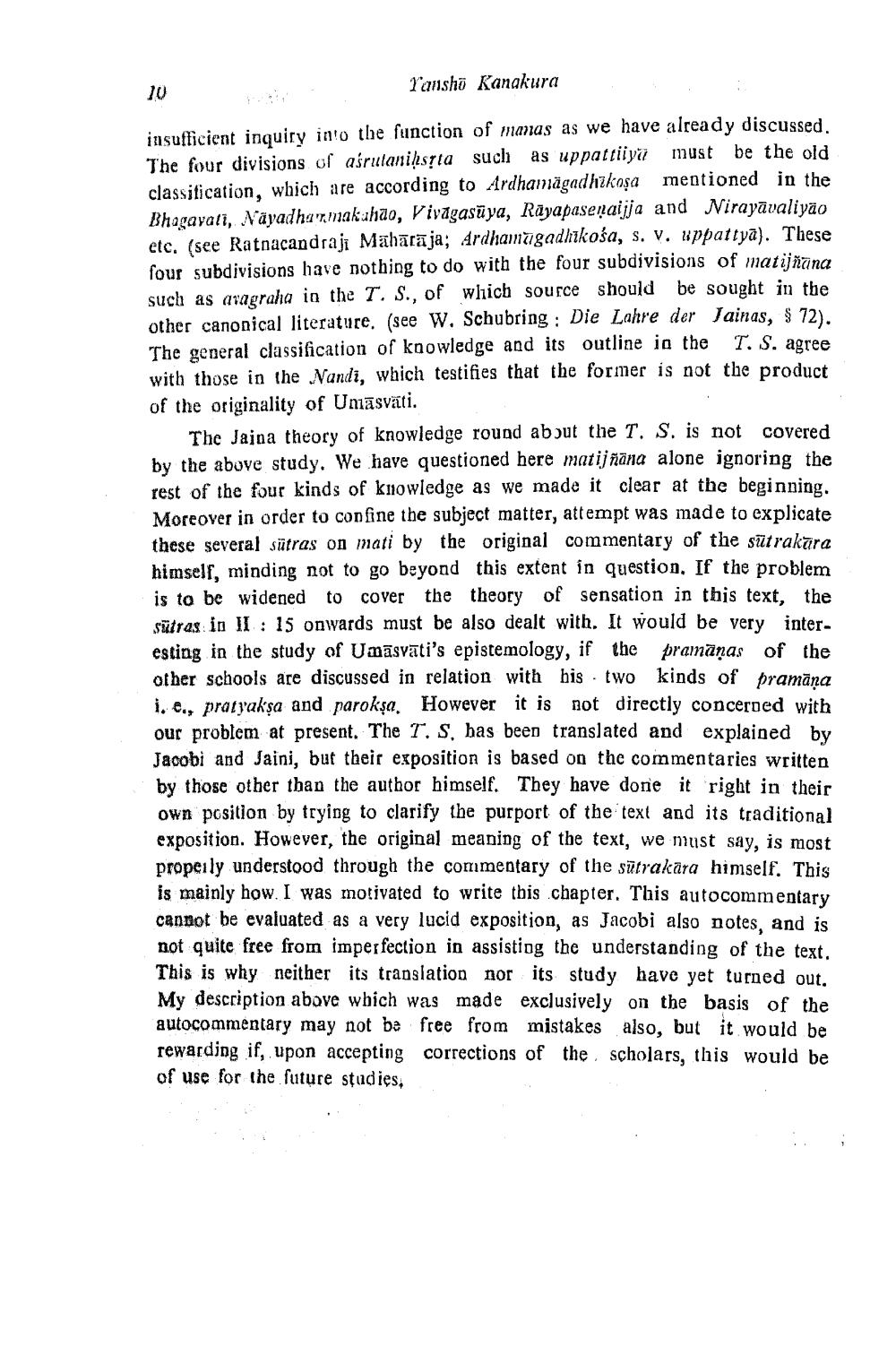________________
Vansho Kanakura
insufficient inquiry into the function of manas as we have already discussed. "The four divisions of aśrutani sta such as uppattiiyat must be the old classification, which are according to Ardhamägadhikosa mentioned in the Bhagavati, Nayadharmakahao, Vivagasüya, Rāyapaseņaijja and Nirayāvaliyão etc. (see Ratnacandraji Mahārāja; Ardhamūgadkikosa, s. v. uppattyā). These four subdivisions have nothing to do with the four subdivisions of matijñana such as aragraha in the T, S., of which source should be sought in the other canonical literature. (see W. Schubring: Die Lahre der Jainas, $ 72). The general classification of knowledge and its outline in the T. S. agree with those in the Nandi, which testifies that the former is not the product of the originality of Umāsväti.
The Jaina theory of knowledge round about the T. S. is not covered by the above study. We have questioned here matij fäna alone ignoring the rest of the four kinds of knowledge as we made it clear at the beginning. Moreover in order to confine the subject matter, attempt was made to explicate these several sütras on mati by the original commentary of the sūtrakūra himself, minding not to go beyond this extent in question. If the problem is to be widened to cover the theory of sensation in this text, the Sütras in II : 15 onwards must be also dealt with. It would be very interesting in the study of Umāsvāti's epistemology, if the pramāṇas of the other schools are discussed in relation with his two kinds of pramāna i. e., pratyaksa and parokşa. However it is not directly concerned with our problem at present. The T. S. has been translated and explained by Jacobi and Jaini, but their exposition is based on the commentaries written by those other than the author himself. They have done it right in their own position by trying to clarify the purport of the text and its traditional exposition. However, the original meaning of the text, we must say, is most properly understood through the commentary of the sütrakara himself. This is mainly how. I was motivated to write this chapter. This autocommentary cannot be evaluated as a very lucid exposition, as Jacobi also notes, and is not quite free from imperfection in assisting the understanding of the text. This is why neither its translation nor its study have yet turned out, My description above wbich was made exclusively on the basis of the autocommentary may not be free from mistakes also, but it would be rewarding if, upon accepting corrections of the scholars, this would be of use for the future studies,




